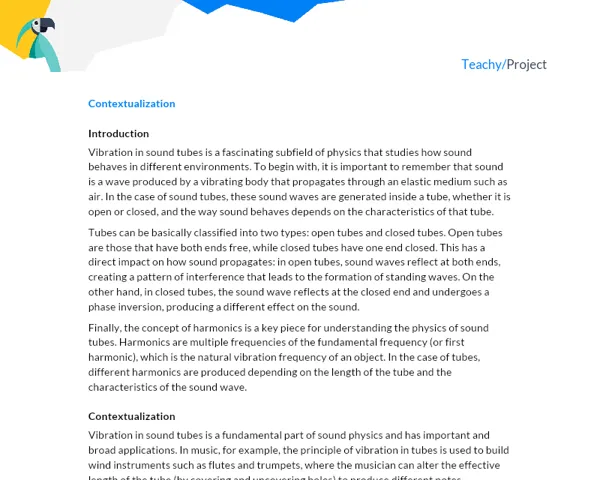Contextualization
Motion transmission is a principle grounded in physics that is employed in various areas and is fundamental for many machines we use in everyday life. It consists of transferring a certain amount of motion from one place to another. There are several ways to transmit motion, with the most common being direct transmission, by gears, by belts, by chains, and by steel cable.
Motion transmission plays a crucial role in our modern society. Take, for example, the case of automobiles: the engine generates a certain motion that is transmitted to the car's wheels, causing it to move. This transmission is possible thanks to a series of components, such as the clutch, the gearbox, the differential, and the homokinetic joints, which work together to efficiently perform this transmission.
This demonstrates how motion transmission, despite being a simple principle, can become extremely complex depending on the application. Therefore, it is an excellent topic to be used in a didactic way, as it is possible to explore various layers of complexity, starting from simple examples and advancing to more complex situations.
Resources for in-depth research on the subject at hand can be found in didactic material such as the book "Fundamentals of Physics" by Halliday, Resnick, and Walker, aimed at high school education. For a more in-depth view, it is possible to refer to mechanical engineering books, such as "Technical Mechanics and Strength of Materials" by Sotero Del Rio.
Additionally, there are online sources that can be consulted, such as the website Just Physics, which offers detailed explanations about motion transmission. They have many resources, such as interactive animations and practical problems to solve.
Practical Activity
Title: "Motion Transmitters: From Theory to Practice"
Project Objective:
To understand the principle of motion transmission, identify and differentiate the main types of motion transmission, and put this theory into practice by building a functional model of a device that employs motion transmission.
Detailed Project Description:
The activity will be conducted in groups of 3 to 5 students. The team must first study the different methods of motion transmission. Then, they must choose a practical application of motion transmission and build a model that demonstrates such a mechanism. For example, they can use a toy car that uses gears for motion transmission.
Next, the students must conduct experiments with the model they built, observing and recording how motion transmission occurs in practice and highlighting the relationship with the theory studied. Finally, they will prepare a report on the project.
The project has a total duration of one week, where students should dedicate between two to four hours per participant to carry it out.
Necessary Materials:
- Materials for building the model (e.g., robotics kits, disassembled toys, cardboard, popsicle sticks, rubber bands, etc.)
- Measurement equipment (e.g., ruler, stopwatch, etc.)
- Documentation material (e.g., notebook, pens, camera for photos/videos, etc.)
Step by Step:
- Conduct initial research on the concepts of motion transmission.
- Have a group discussion to choose a practical application of motion transmission to model.
- Draw an initial sketch of the model, including all parts involved in motion transmission.
- Gather the necessary materials for building the model.
- Build the device model.
- Conduct experiments with the built model, documenting the results.
- Prepare and deliver a report on the project.
Project Deliverables:
A written document must be delivered at the end of the practical activity, containing the following sections:
- Introduction: Presenting the theme, its relevance and real-world application, and the objective of this project.
- Development: Describing the theory behind the types of motion transmission, the activity carried out in detail, the methodology used, and the analysis of the results obtained. Photos and/or videos of the model and experiments conducted should be attached in this section.
- Conclusion: Summarize the main points, explain the learnings obtained, and draw conclusions about the project. Your reflection on teamwork should also be included in this section.
- Bibliography: Indicate the research sources used to work on the project, such as books, web pages, videos, etc.
Teamwork and collaboration will be evaluated based on the quality of the model built and the clarity and organization of the written document reporting the project. It is expected that students can demonstrate the knowledge acquired about motion transmission and showcase the technical and socio-emotional skills developed during the project.



